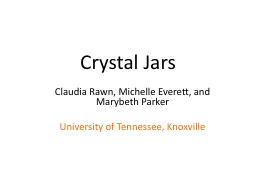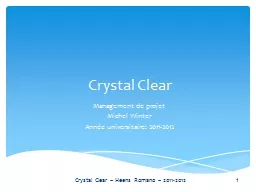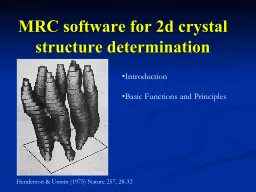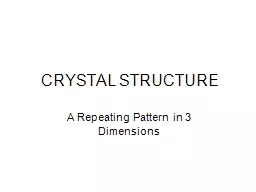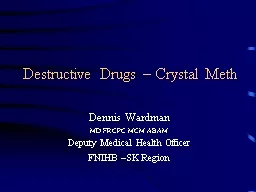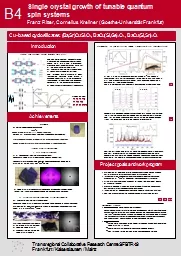PPT-Crystal Growth
Author : min-jolicoeur | Published Date : 2017-09-17
How do single crystals differ from polycrystalline samples Atomic arrays that are periodic in three dimensions with repeated distances are called single crystals
Presentation Embed Code
Download Presentation
Download Presentation The PPT/PDF document "Crystal Growth" is the property of its rightful owner. Permission is granted to download and print the materials on this website for personal, non-commercial use only, and to display it on your personal computer provided you do not modify the materials and that you retain all copyright notices contained in the materials. By downloading content from our website, you accept the terms of this agreement.
Crystal Growth: Transcript
Download Rules Of Document
"Crystal Growth"The content belongs to its owner. You may download and print it for personal use, without modification, and keep all copyright notices. By downloading, you agree to these terms.
Related Documents



